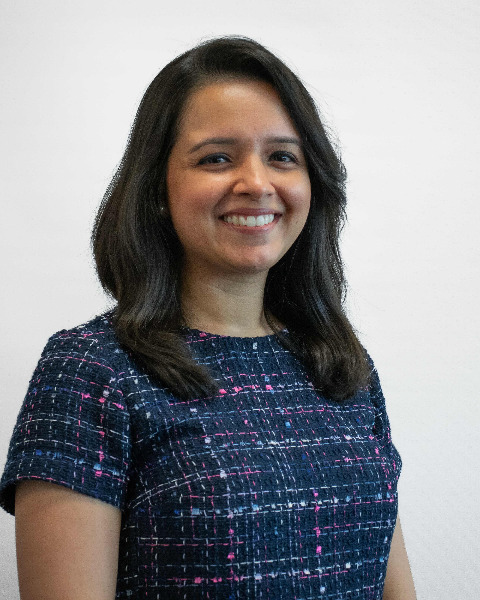Research (R)
PP1303 - The Utility of ChatGPT in Clinical Audiology Communication
POSTERS
Location: Halls A1-A2
Instructional Level: Fundamental

Laura Gaeta, PhD
Associate Professor
California State University, Sacramento
California State University, Sacramento
Sacramento, CaliforniaDisclosure(s): No financial or nonfinancial relationships to disclose.
Lead Presenter(s)
Abstract: A significant amount of clinician time is spent on documentation of patient visits and counseling. ChatGPT can quickly generate text, so there is potential for its application in clinical practice. The purpose of the current study was to assess audiologists' perceived accuracy, quality, and comprehensiveness of ChatGPT-generated clinical documents. Participants rated a clinical report, clinical note, and counseling dialogue for its clinical use. Ratings were generally positive, with participants scoring accuracy and quality highly. This poster presentation will discuss the potential uses of ChatGPT in written and verbal communication within audiology.
Summary: Rationale/purpose: ChatGPT is an advanced language processing model that is driven by artificial intelligence. About 35% of healthcare professionals' time is spent on progress notes (Rule et al., 2021), and documentation for visits can be lengthy. Since ChatGPT can quickly generate text, there is potential for its use to be explored in reducing clinician documentation time (Nguygen & Pepping, 2023) and as another resource for patients seeking additional information about their hearing loss. The purpose of this study was to assess audiologists' perceptions of clinical documents and a dialogue that were generated by ChatGPT for its potential utility in clinical practice.
Methods: Three prompts were provided to ChatGPT version 4 to create: 1) a clinical report, 2) a clinical note, and 3) a dialogue for a counseling appointment for a patient. No follow-up prompts and no edits were used to refine the generated documents. Participants were asked to respond to questions about accuracy, quality, comprehensiveness, confidence, and comfort for each of the generated prompts. Participants were not informed that the texts presented were generated by ChatGPT until they had completed the survey.
Results: Audiologists' ratings of the clinical report and counseling dialogue were generally positive. Participants rated the accuracy, text quality, and level of clinical reasoning and understanding the highest. Favorability did not significantly correlate with age of the participant or years of experience as an audiologist. Full results will be shared on the poster.
Conclusions: The findings of this study show that ChatGPT may be useful as a foundation for audiology written and verbal communication. Given these prompts had no editing or additional prompting, audiologists could refine their queries to generate more specific text and/or text that meets their reporting requirements for clinical use. ChatGPT could also be suggested as another source of informational counseling for patients who seek information about their hearing loss and/or hearing evaluation results. Instructors who teach report writing courses may find use in ChatGPT as a teaching tool for students who are developing their clinical documentation skills.
Summary: Rationale/purpose: ChatGPT is an advanced language processing model that is driven by artificial intelligence. About 35% of healthcare professionals' time is spent on progress notes (Rule et al., 2021), and documentation for visits can be lengthy. Since ChatGPT can quickly generate text, there is potential for its use to be explored in reducing clinician documentation time (Nguygen & Pepping, 2023) and as another resource for patients seeking additional information about their hearing loss. The purpose of this study was to assess audiologists' perceptions of clinical documents and a dialogue that were generated by ChatGPT for its potential utility in clinical practice.
Methods: Three prompts were provided to ChatGPT version 4 to create: 1) a clinical report, 2) a clinical note, and 3) a dialogue for a counseling appointment for a patient. No follow-up prompts and no edits were used to refine the generated documents. Participants were asked to respond to questions about accuracy, quality, comprehensiveness, confidence, and comfort for each of the generated prompts. Participants were not informed that the texts presented were generated by ChatGPT until they had completed the survey.
Results: Audiologists' ratings of the clinical report and counseling dialogue were generally positive. Participants rated the accuracy, text quality, and level of clinical reasoning and understanding the highest. Favorability did not significantly correlate with age of the participant or years of experience as an audiologist. Full results will be shared on the poster.
Conclusions: The findings of this study show that ChatGPT may be useful as a foundation for audiology written and verbal communication. Given these prompts had no editing or additional prompting, audiologists could refine their queries to generate more specific text and/or text that meets their reporting requirements for clinical use. ChatGPT could also be suggested as another source of informational counseling for patients who seek information about their hearing loss and/or hearing evaluation results. Instructors who teach report writing courses may find use in ChatGPT as a teaching tool for students who are developing their clinical documentation skills.
Learning Objectives:
- Identify potential uses for ChatGPT in written and oral communication in audiology.
